Last Chance to Catch NYC's Holiday Notalgia Train
We met the voices of the NYC subway on our nostalgia ride this weekend!


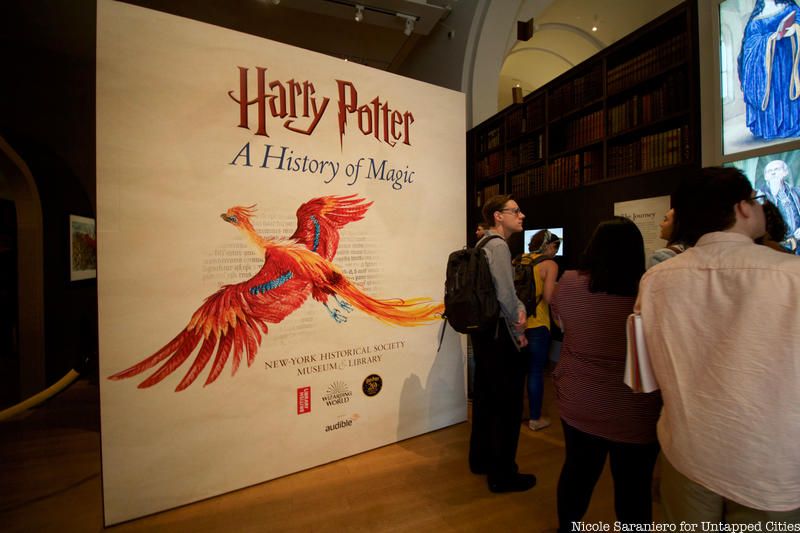
Muggles and wizards alike can celebrate the twentieth anniversary of the U.S. publication of Harry Potter and the Sorcerer’s stone by examining a plethora of magical artifacts at the New York Historical Society’s new exhibition Harry Potter: A History of Magic. While walking through rooms dedicated to the seven subjects taught at the Hogwarts School of Witchcraft and Wizardry – Potions, Herbology, Charms, Divination, Astronomy, Defense Against the Dark Arts, and Care of Magical Creatures – visitors will be immersed in the history of magical folklore and tradition that inspired and informed the world of the Harry Potter series. This exhibition features a spellbinding collection mystical tools, rare books and other items from around the world and as far back in time as 700 C.E. There are numerous pieces of original artwork by illustrators who have worked on the Harry Potter series over the years, and exclusive sketches and documents from author J.K Rowling herself. Many items in the exhibit are on display for the first time.
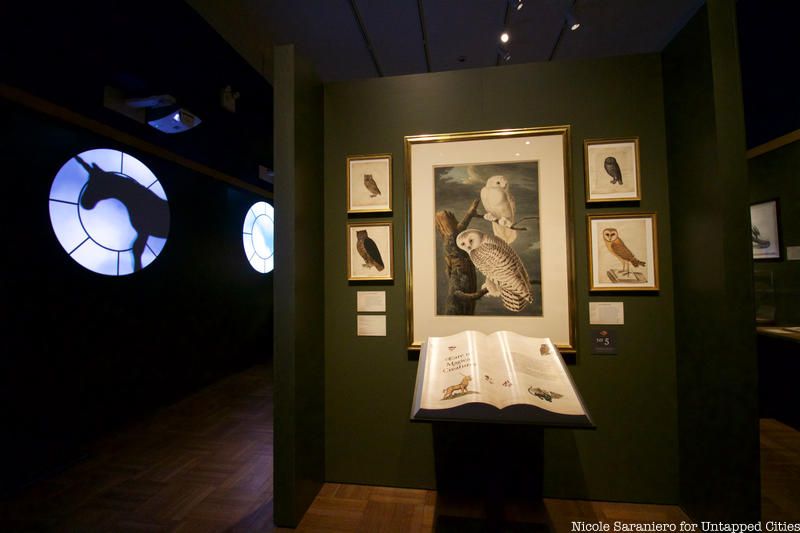
“A History of Magic” originated at the British Library in England where it became the library’s most successful exhibition. Items featured in this New York iteration come from the collections of the British Library and New York Historical Society as well as other UK institutions like the Museum of Witchcraft and other American institutions such as the Wellcome Collection, the American Museum of Natural History, and the New York Botanical Garden. To compliment the exhibition, which runs until January 27, 2019, the New York Historical Society will host a variety of related events including trivia nights, art workshops, creative writing classes, social meet-ups, open mics, book clubs, and engaging courses as well as special conversations with Potter illustrators Mary GrandPré and Brian Selznick. The exhibition will also be complimented by a companion book published by Scholastic. Harry Potter: A History of Magic, the book, will delve into the history of the more than 150 items displayed in the exhibition. For more in-depth content on the items while walking through the exhibition, visitors can opt to listen to a free Audible guide narrated by actress Natalie Dormer.
The exhibition is open to the public now and timed entry tickets can be purchased here. At a press preview on Thursday, Untapped Cities got to walk through A History of Magic with Roberta Olson, Curator of Drawings at the New York Historical Society and Alexander Lock, Curator of Modern Archives and Manuscripts at British Library, who provided enthusiastic and knowledgeable insight into some of the exhibition’s most notable pieces. Here is a list of 15 of our favorite artifacts:
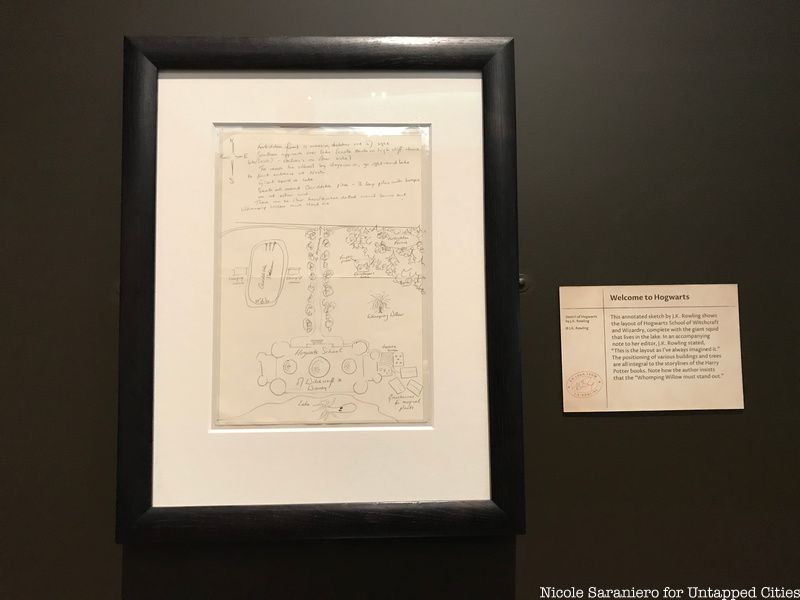
Scattered throughout the exhibit are hand drawn sketches created by author J.K. Rowling while in the process of writing the Harry Potter series. In the first section of the exhibit you will find the above annotated sketch of the Hogwarts School of Witchcraft and Wizardry from Rowling’s personal collection. This sketch was sent to her editor to show how Rowling imagined the layout of the school. Rowling emphasized the location of the Whomping Willow and even drew in the giant quid that lives in the lake. The exhibit also contains multiple detailed sketches that Rowling drew of her characters, including nearly-headless Nick, and a heart-warming sketch of how the author envisioned the scene of Hagrid, Dumbledore and Mcgonagall dropping Harry off at the Dursleys.
Along with Rowling’s drawings, there are multiple pieces of writing and outlines she created while putting the books together which give visitors a peek into to her creative process. Rowling worked in different mediums as she wrote so there are examples of typewritten and handwritten pages. Documents featured in the exhibition also include a letter from her editor on the subject of changing the title of the first book from Harry Potter and the Philosopher’s Stone to Harry Potter and the Sorcerer’s Stone, for the U.S. publication.
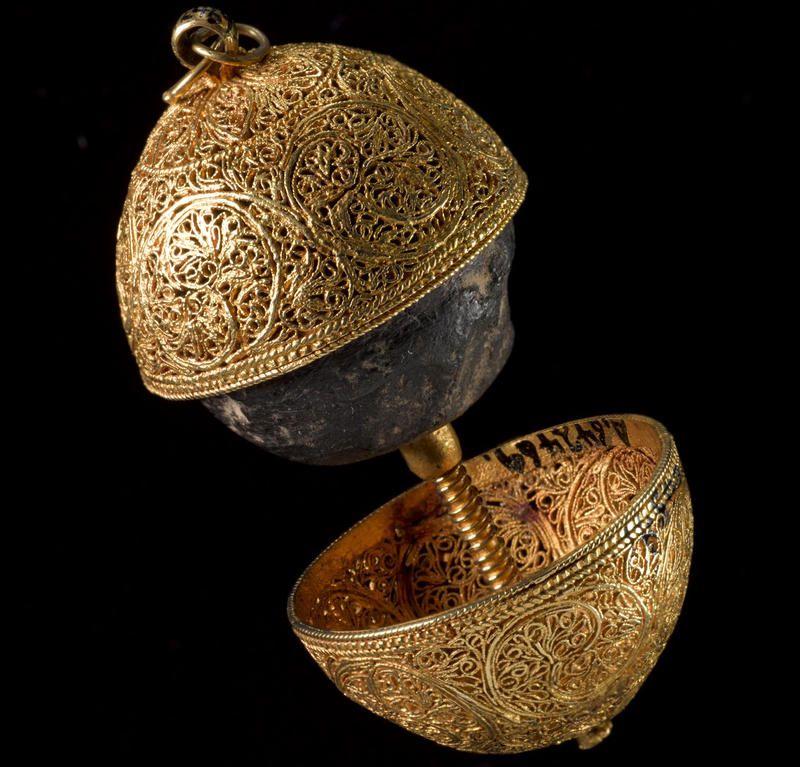
Bezoar stone in a gold filigree case, 17th century, Part of the Wellcome Collection, which is cared for by the Science Museum © The Board of the Trustees of the Science Museum, London
In Harry Potter and the Half Blood Prince, the sixth book in the series, Ron Weasley unknowingly drinks mead that has been poisoned. Luckily, Harry, remembering a first year potions lesson, grabs a bezoar stone and feeds it to Ron, saving his life. In real life, bezoar stones were actually believed to be an antidote to poison. The word bezoar is a corruption of the Persian word “pādzahar” which roughly means “to expel poison.” They were first introduced to medieval Europe by Arab physicians. Wealthy owners often carried their stones in elaborate cases like the one above which can be seen on display in the exhibit. A bezoar stone is a mass of undigested fiber that forms in the stomach of certain animals, mostly commonly goats. Though they have also been found in cows and elephants, goat bezoars were believed to be have best medicinal qualities.
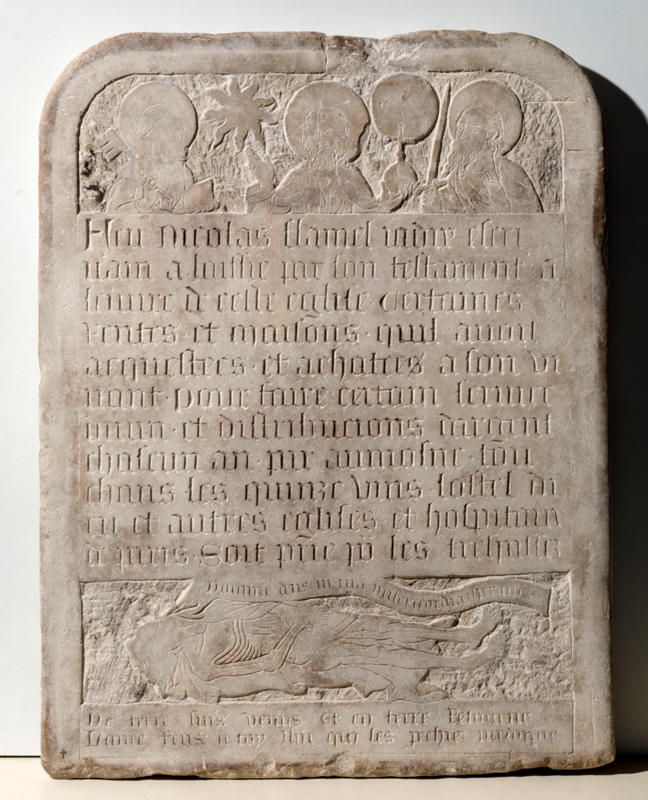
Tombstone of Nicolas Flamel, Paris, 15th century, © Paris, Musée de Cluny – Musée national du Moyen Âge
The tombstone of Nicolas Flamel was J.K. Rowling’s favorite item from the British Library exhibit and it has made it’s way across the pond to the New York version. Harry Potter fans know Flamel as the character who created the Sorcerer’s Stone (or Philosopher’s Stone), and he was actually a real person who lived in Medieval Paris. Flamel was a wealthy landowner and bookseller. When he died, rumors started to spread that he was an alchemist and that he had discovered the Philosopher’s Stone. Flamel designed his own tombstone and was buried in Saint-Jacques-de-la-Boucherie in Paris. His body was never found when his grave was later exhumed, which fed into rumors that he had the Elixir of Life and never died in the first place. His tombstone was reportedly found being used as a cutting board by a Parisian grocer!
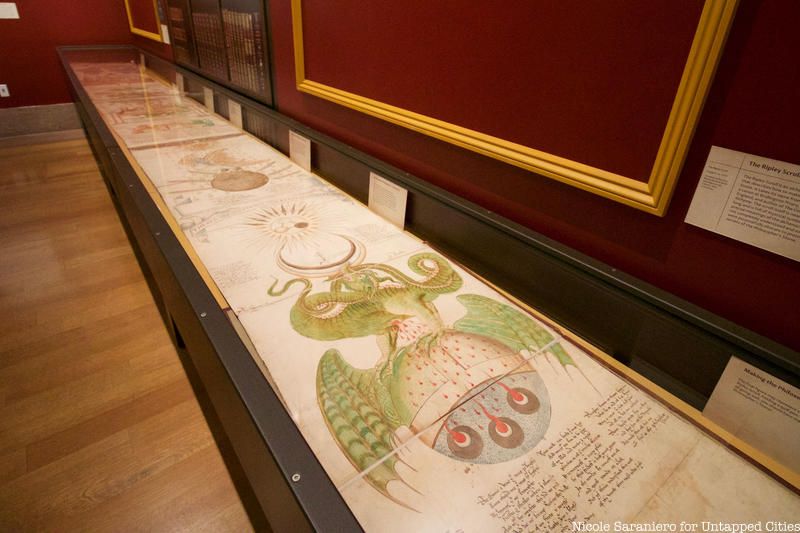
The Ripley Scroll is one of the most impressive items in the exhibit. The scroll is an alchemical manuscript that describes how to create a Philosopher’s Stone. It is full of mystical symbolism and alchemical icons that are not completely understood. Some icons are purposefully obscure to protect the secrets of the stone. The twenty-foot long scroll starts with an illustration of an alchemist holding a flask that contains a toad. Toads were believed to have regenerative powers and this quality is what was being harnessed for the stone. The final scene, pictured above, shows the black, red, and white stones coming together to form the Philosopher’s Stone. J.K. Rowling drew on alchemical symbolism for the names of Harry Potter characters. Albus, as in Albus Dumbledore, means “white” and “Rubeus,” as in Rubeus Hagrid, means “red.” Both of these colors figure prominently in alchemical processes.
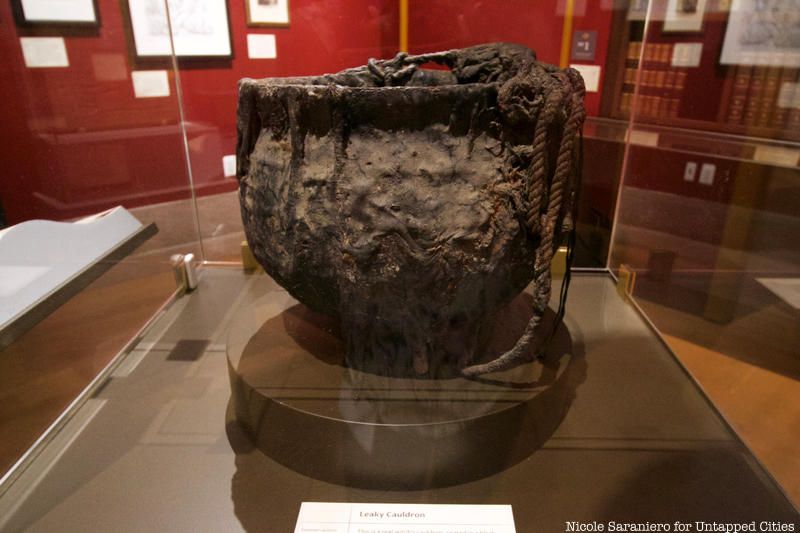
You won’t find any butter beer in this leaky cauldron. This real witch’s cauldron reportedly exploded when it was use in a spirit invocation gone wrong. The story goes that sometime in the last century a group of witches in Cornwall, England were attempting to create a powerful potion near the sea. They soon realized that too much smoke was coming out of the cauldron so they fled. When someone returned to the site later on, they found this melted looking cauldron covered in a tar-like substance.
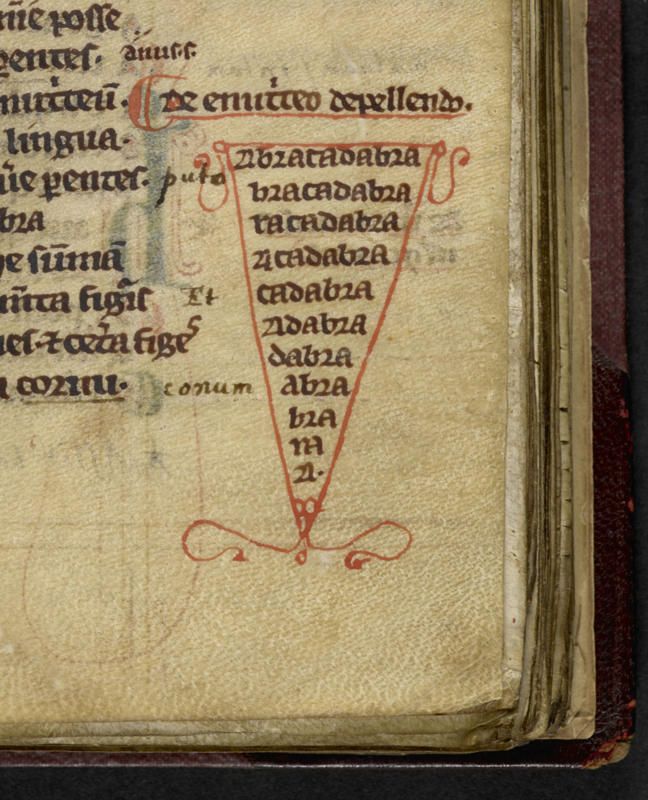
Liber Medicinalis, detail, Canterbury, 13th century ©British Library Board
Before J.K. Rowling introduced “wingardium levi-O-sa,” “expecto patronum,” and “lumos” into the magical lexicon, the most well-known charm was probably “abracadabra.” “Abracadabra” was believed to have healing powers and was prescribed as a cure for malaria. This book, Liber Medicinalis, or “Book of Medicine,” written by Roman Emperor Caracalla in the 13th century contains the first known written record of the charm. Those wishing to invoke its powers would have to write the word out repeatedly, each time omitting one letter until there was a single one left. The paper was then worn around the neck as an amulet to ward off disease.
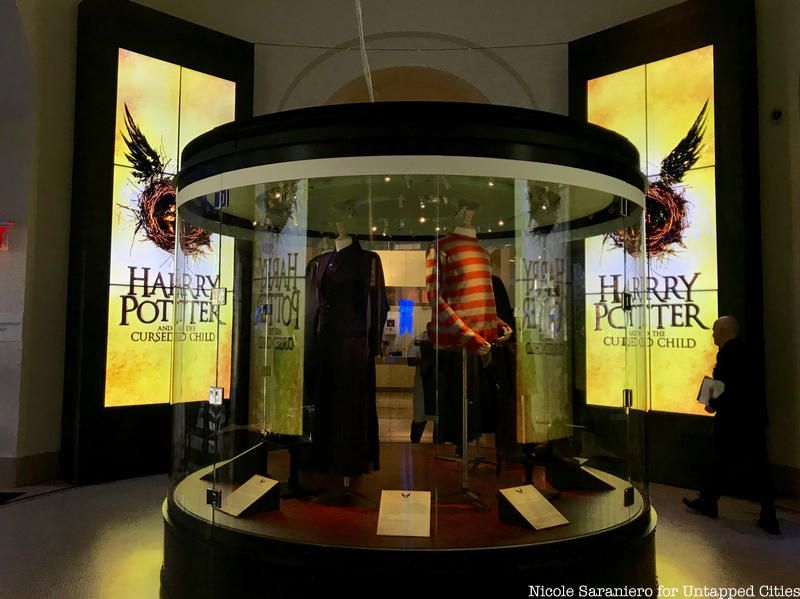
Harry Potter and the Cursed Child made its Broadway debut at the Lyric Theater in the Spring of 2018. In the Historical Society’s exhibit you can see costumes worn by actors in the London production which premiered in July 2016. Those familiar with the Potter characters can easily identify which costume belongs to which character. Inside A History of Magic, there are also stage and house models of the Lyric Theater, which underwent a complete redesign and renovation in preparation for the North American premiere of the production.
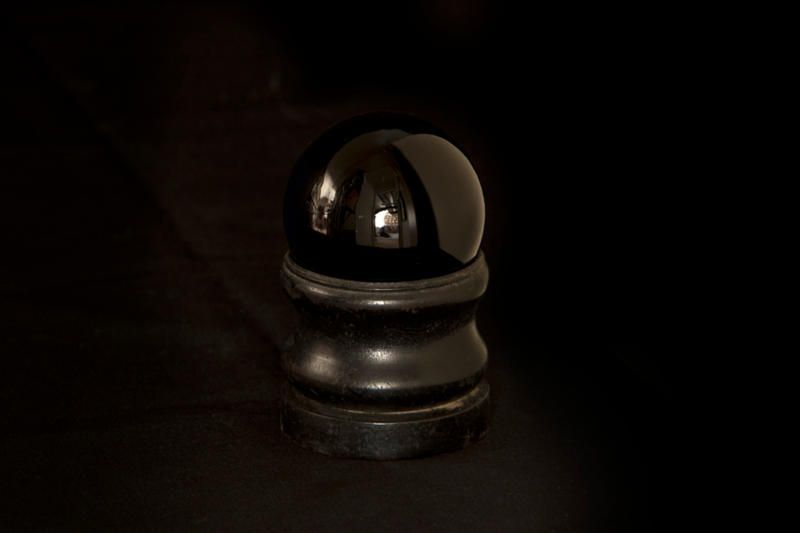
Black Moon crystal ball, 20th century, © Museum of Witchcraft, Boscastle
“Smelly Nelly” was a Paignton witch who used this Moon crystal divination tool. She was called “Smelly Nelly” because she liked to use strong perfumes when peering into the future. She believed these aromas would be appealing to the spirits. Unlike most crystal balls which are clear, this black stone is meant to be consulted at night when the Seer can read the reflection of the Moon in the glass. In the Divination room along with this crystal ball is a teacup used for reading tea-leaves, a practice that figures prominently in the Potter series.
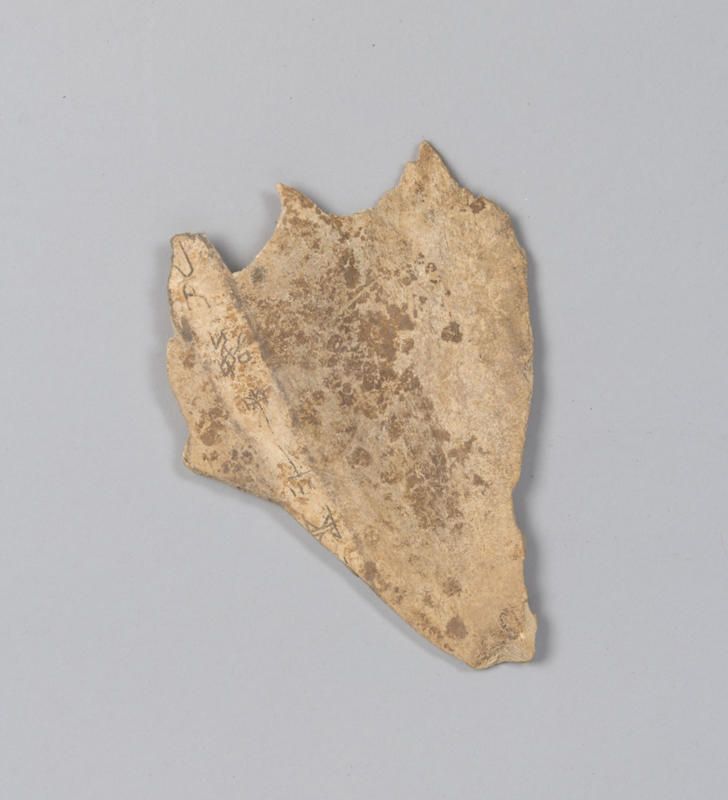
Oracle bones, China, ca. 1600–1046 BCE, Metropolitan Museum of Art, Gift of A.W. Bahr, 1923
The Chinese oracle bones are the oldest artifacts in the exhibition. Possibly dating all the way back to 1600 B.C.E., these bones are divination tools used during the Shang Dynasty. A question would be engraved into the bone and then a hot metal rod would be inserted into pre-carved holes. The resulting pattern of fractures would be read by a shaman who would divine an answer to the question posed.
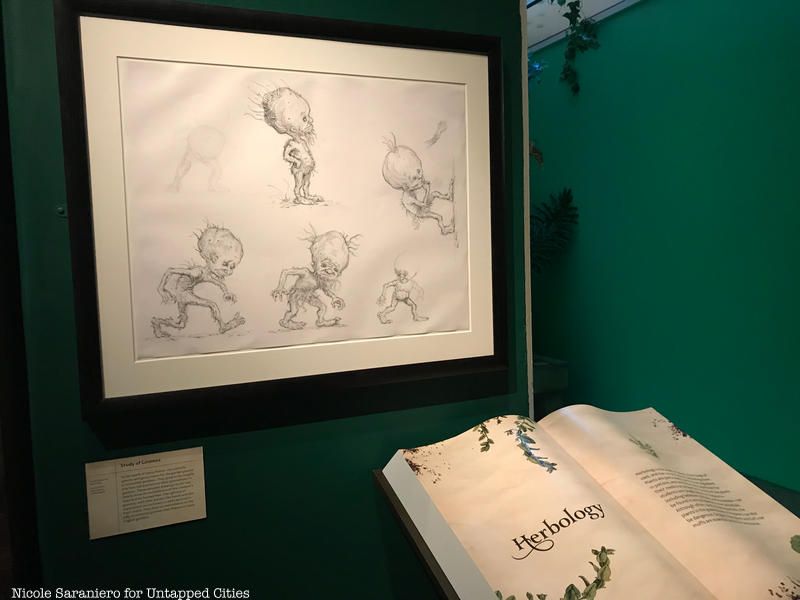
Just as in the Harry Potter books and movies, real life mandrakes are plants, their roots can resemble human figures, and it was believed that they let out a deadly scream when pulled from the ground. Due to their human-like appearance people thought these plants had special powers. It was believed that if you pulled up a mandrake you would be condemned to hell and its scream would kill anyone who heard it. To avoid this damnation, people tied the roots to an animal, like a dog, and made them do the pulling. Mandrakes have hallucinogenic and narcotic properties. They were sometimes used as an anesthetic, but taking too much could result in loss of consciousness or death.
The root on display in this exhibition dates back to 16th or 17th century England and it looks like a bearded old man. Photo restrictions prohibited us from taking a picture of the mandrake, but above you can see original sketches of gnomes by illustrator Jim Kay.
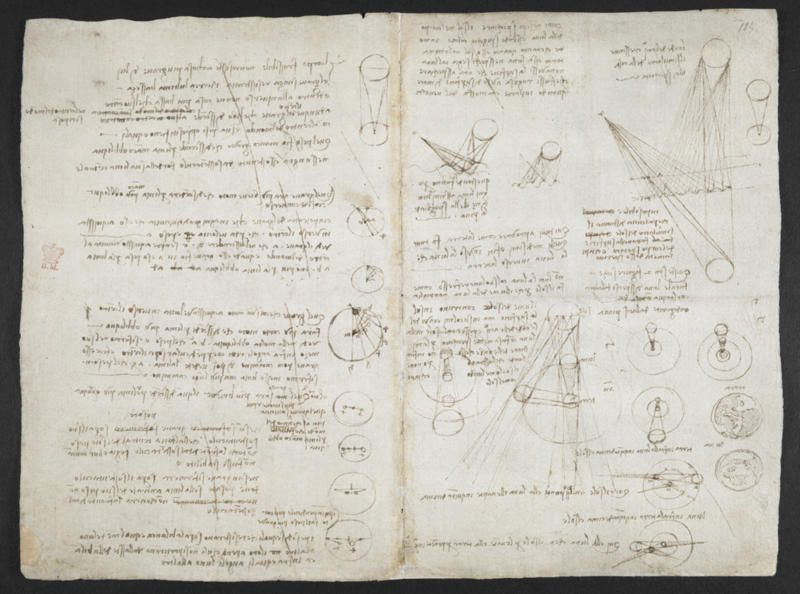
Leonardo da Vinci’s notebook, Italy, ca. 1506–08, ©British Library Board
You will find these pages written by Renaissance artist and inventor Leonardo Da Vinci in the Astrology room. Like much of Da Vinci’s writing, the Italian text on these pages is written from right to left. There are differing theories as to why Da Vinci used this “mirror writing.” The most common theory is that since he was left handed, writing from right to left would simply prevent him from getting ink on his arm. Another theory suggest he wrote this way because he was dyslexic.
The subject matter in these pages is the moon. The diagram in the center on the right page shows the Sun and Moon orbiting around Earth. Da Vinci also believed that the moon was covered with water.
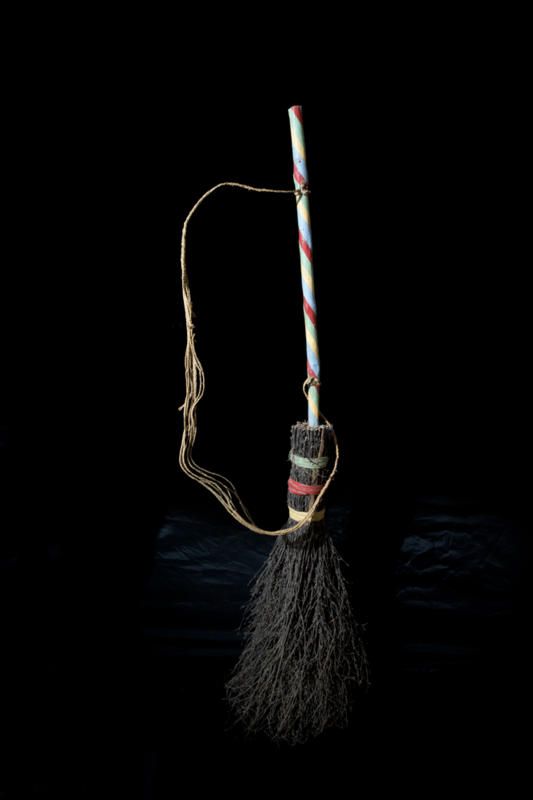
A broomstick belonging to Olga Hunt © Museum of Witchcraft, Boscastle
Though this broomstick never saw any action on the Quidditch field, it was owned by a real life witch, Olga Hunt. Hunt, of Manaton, Devon in England, is said to have leapt around on this broomstick during every full moon. Broomsticks and witches became inexorably linked in the hysteria of 16th and 17th century Europe, though the tradition actually has ancient roots in pagan fertility rites.
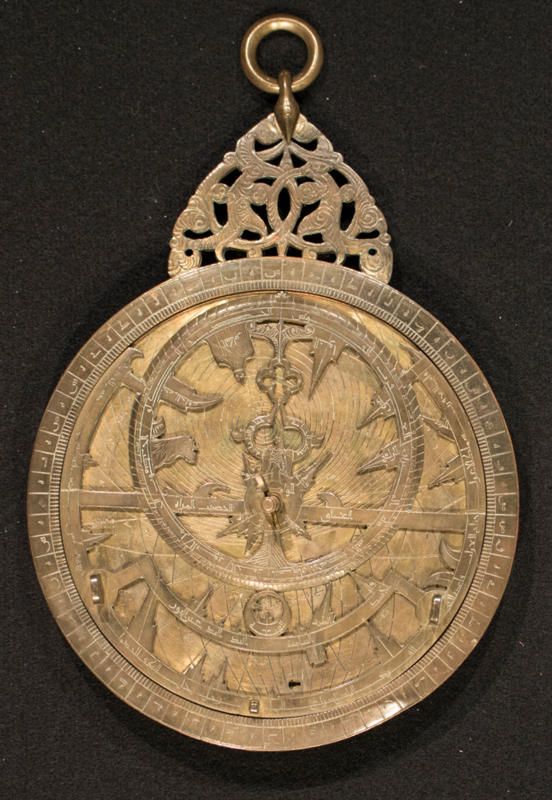
Muhammad b. Abi Bakr, Astrolabe, Isfahan, 13th century, American Museum of Natural History Library, The Bliss Collection, Photo: Kendra Meyers
This Persian astrolabe from the 13th century is believed to be the oldest working geared instrument in existence. These tools created a 2-D map of the sky and could be used to determine latitude. It was helpful in the Islamic world in determining the direction of Mecca. This astrolabe has a calendar on the back that shows the lunar phase and the position of the sun and the moon in relation to the zodiac signs.
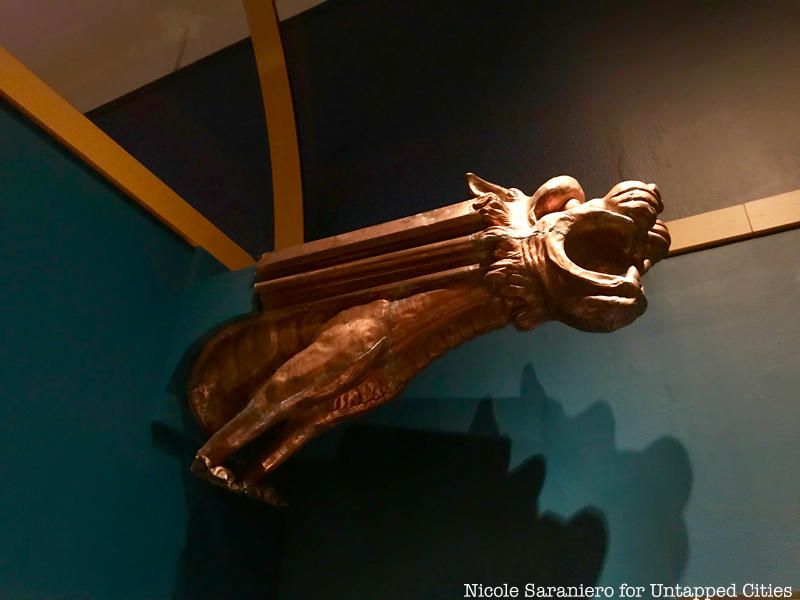
New York City is the setting of the first film in the Harry Potter spin-off movie franchise Fantastic Beasts, and you will find one in the exhibition. This chimera, a fire breathing monster with a lion’s head, was one of eight figures that once loomed over Times Square from the 24th floor observatory of the Times Tower. Next to this figure in the exhibition is a drawing by architect Cass Gilbert of the Woolworth Building, a structure decked inside and out with gargoyles and grotesques of all kinds. The Woolworth also serves as the setting for the Magical Congress of the United States in the Fantastic Beasts films.
Have you spotted a gargoyle in New York City? Share it with us on Instagram by tagging #NYCGargoyleContest and you could win 2 tickets to our VIP Tour of the Woolworth Building led by Cass Gilbert’s great-granddaughter Helen Curry!
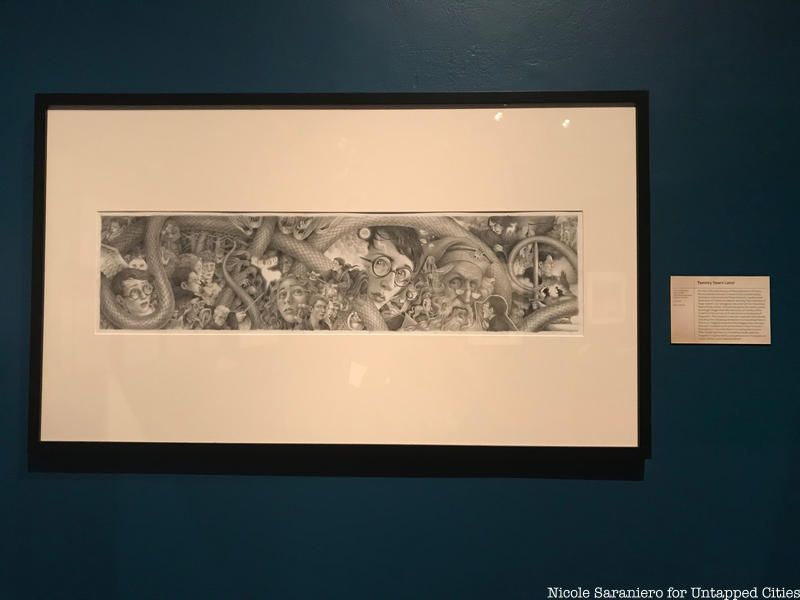
US, 2018, Brian Selznick, Art by Brian Selznick © 2018 by Scholastic Inc.
For the twentieth anniversary of the Sorcerer’s Stone’s, Scholastic asked illustrator Brian Selznick to reimagine the cover art for the entire series. Selznick did so and designed all seven covers to be pieces of one continuous illustration. This drawing distills the entire story of Harry Potter from his delivery to Privet Drive through the Battle of Hogwarts. The illustrations is extremely detailed and if you spend time with it up close you will pick out iconic pieces of Harry’s story like his stag patronus, the invisibility cloak, Hermione’s time turner, and the Hogwarts Express.
This piece is one example of the many pieces of original artwork created by the Harry Potter series’ many illustrators and cover artists that can be seen in the exhibit. There are cases filled with Harry Potter books from around the world, original sketches and drawings by illustrator Jim Kay, and examples of artwork by original cover artist Marie GrandPré, and Kazu Kibuishi, who designed the fifteenth anniversary cover art.
Next, check out 5 Places to Visit in NYC to Celebrate the Art of Magic
Subscribe to our newsletter